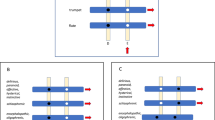Abstract
MR. TYLOR speaks of vampires as illustrations of Savage Animism, and regards them as inventions to explain wasting disease. The records of such unseen agents point to two classes of vampires, one of which has nothing to do with wasting disease. To take two extreme cases: the story of Grettir's conflict with Glam the house churl, contrasts with the Vampire Cat of Nabeshimes, as told by Mitford in the “Tales of Old Japan.” The Northern hero seeks the evil one and overpowers him, but his success is dearly bought, for evil temper and nervousness never leave him, and his after life is unlucky from these two causes. The Japanese Prince is visited nightly by the counterfeit of his lovely concubine, he pines away, and is only saved by the energy of a retainer, who slays the fair persecutor. Here are types of two kinds of malady; one is truly wasting, the other is of that kind which ends in apoplexy, epilepsy, acute mania, or if death is not speedy and sudden, dyspepsia may reduce the hero to Grettir's state without obviously impairing his strength. The Japanese story gives the common superstition among polygamous people with whom progressive exhaustion is not uncommon, as “Hawke's Voyages” quaintly explain. The Grettir Saga gives a pagan version of what figures more than once in Christian legends as saintly intervention. Thus, the Scandinavian invader blasphemes the English saint, who straightway appears to him, and points the finger; the blasphemer drops down dead. Glam, the churl, gorges himself with food, and goes to the hill, the next morning he is found crushed and distorted, and the horror of his punishment is proportioned to his crime, for he ate meat on a Church fast, and it was doubtless sweet to his neighbours to recall the fact that they heard his shrieks when sitting in church. Glam's successors perish violently, one of them being found convulsed and broken on Glam's cairn, just as in more places than one in Scotland men have been found in convulsions near places which superstition had made terrible on account of some great crime. But Grettir, for twenty years after his fight with Glam, leads a life of incessant fighting as an outlaw. He cannot go alone, his nerve is shaken, he sees things in the dark, and his temper is irritable. It is of course impossible to separate out the various forms of unseeen agency to which men in rude times were subject. But the Vampires of the North and Incubi are members of the same family; the Vampires of Asia belong to another family. The former represent indigestion, the results of gross overeating and drinking, aggravated, doubtless, by the circumstances that the opportunities of excess were not frequent, and that semi-starvations occurred often between copious meals. The demons are mostly men; in all cases they give rise to violent conflicts, in which, if a man dies, his distorted convulsed body suggests the presence of a corporeal enemy, a reasonable enough notion among those to whom natural death meant, in the case of a strong man, death by the sword. The latter represents the results of lechery in some form or other; there is no tale of conflict, though now and then sudden death is accompanied by convulsions such as, we know, frequently terminate cases of general paralysis and Tabes dorsalis. The correspondence between the Northern Berserker and the furious Malay who runs amuck, is interesting in reference to this contrast The insanity of the Berserker is that of an individual; the persecution of the Northern vampire falls on the whole family of the sufferer; and, while it is difficult under ordinary circumstances for any large number of people to become simultanequsly affected by genuine fury (though Mr. Wallace furnishes a possible analogy to ancient custom in what we may call a sociable Amok), the contagion of fear makes it easily intelligible how even a district might come to see and hear what had no existence save in the disturbed imagination of one. The Incubi and Suscubi of the Middle Ages in Europe may be paralleled at the present day in asylums, and, now as then, are met with among those who have placed themselves in conditions similar to the unhealthy ones of the Convent.
This is a preview of subscription content, access via your institution
Access options
Subscribe to this journal
Receive 51 print issues and online access
$199.00 per year
only $3.90 per issue
Buy this article
- Purchase on Springer Link
- Instant access to full article PDF
Prices may be subject to local taxes which are calculated during checkout
Similar content being viewed by others
Author information
Authors and Affiliations
Rights and permissions
About this article
Cite this article
YOUNG, J. Pathological Legends. Nature 6, 82–83 (1872). https://doi.org/10.1038/006082b0
Issue Date:
DOI: https://doi.org/10.1038/006082b0
Comments
By submitting a comment you agree to abide by our Terms and Community Guidelines. If you find something abusive or that does not comply with our terms or guidelines please flag it as inappropriate.


